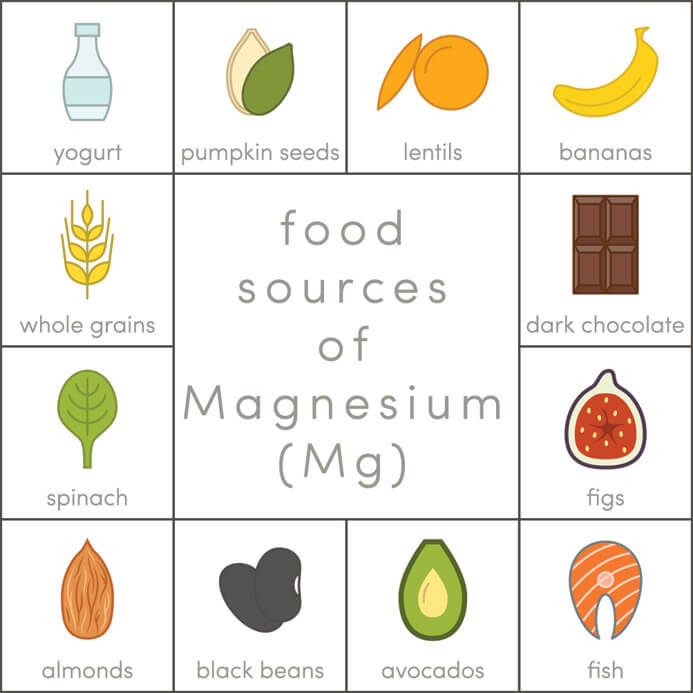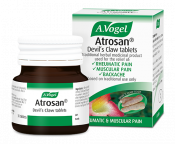How does magnesium help pain?
Magnesium plays an important part in maintaining the health of the muscles, as well as in particular processes such as muscle contraction. This is how our muscles change and stretch as we lift weights in the gym for example, or carry a heavy bag, therefore if we fail to get enough magnesium muscle spasms and cramp can arise.1 If magnesium deficiency continues longer term though, these problems can turn into muscle weakness and poor muscle co-ordination.
Research shows that headaches and migraines are also associated with magnesium deficiency so again, keeping levels topped up could help to prevent such problems from occurring.2
Further to this, magnesium can have a relaxing effect on the nervous system which may reduce the likes of muscle spasms and twitches.
Yet another side effect of low magnesium levels is inflammation which can also contribute to aches and pains. One particular study looked at this issue in depth and found that children with the lowest magnesium levels had the highest CRP levels, an inflammatory marker.3 These issues can be eased however, by topping up your intake of magnesium.

What type of magnesium is good for muscles and joints?
For adult males aged over 18, the recommended dietary allowance for magnesium is between 400mg-420mg. For women over the age of 18 the allowance is between 310mg-320mg, though this amount increases slightly during pregnancy and lactation.4
Fortunately it is quite easy to achieve this recommended amount because, as the image below shows, magnesium is readily available in a variety of fresh fruit and vegetables. Dry roasted almonds contain the most magnesium per serving, though spinach, cashew nuts, peanuts and soymilk are not far behind. Processed foods such as ready meals and jars of sauce on the other hand, tend to be considerably lower in this particular mineral so this is something to bear in mind when doing your shopping!

Should I take a magnesium supplement?
If you really want to reap the benefits of magnesium then a supplement is a good option however, you will have to be careful about which product you choose. Some tablet varieties for example, are not well absorbed by the body, whilst others contain too much magnesium – remember you get lots of magnesium through your diet so only a small supplement is necessary. Too much magnesium can lead to unpleasant symptoms such as diarrhoea, low blood pressure, nausea, muscle weakness and lethargy.
Balance Mineral Drink makes a great alternative to such products though, as it contains 30% of your daily magnesium allowance so you can still top up your intake using your diet too. Alongside magnesium Balance contains zinc, calcium, potassium and vitamin D which together support normal muscle function and bone maintenance. The combination also works well to reduce tiredness and fatigue, plus it can be used in the period after a workout to replace lost minerals and replenish energy levels.
My Top Tip:
|
Magnesium-rich recipes
Whether you are cooking breakfast or lunch, a quick snack or a hearty dinner for all the family, our recipe hub provides lots of inspiration for your next meal. Also, if you want to incorporate more magnesium into your diet then you needn’t look any further than this recipe hub. Here you will find a wide variety of recipes that cater to all tastes and dietary requirements. Below I’ve picked out a few of my favourite magnesium-rich recipes but do take a look for yourself as well!
Breakfast:
- Cacao and peanut butter porridge
- Apple and spinach smoothie
- Raspberry and blueberry smoothie with coconut milk
Lunch mains:
- Kale and avocado salad bowl
- Mixed bead salad with little radish and red clove sprouts
- Broccoli, kale and sweet potato soup
Dinner mains:
- Three bean chilli stuffed peppers
- Lentil shepherd’s pie
- Creamy spinach potato bake
- Easy chickpea and spinach curry
Sides:
Sweet snacks/desserts:
- Almond and strawberry jam flapjacks
- Coconut and cashew amazeballs
- Healthy banana oat cookies
- Pumpkin spice breakfast bars
- Date free peanut butter bliss balls
- Healthy banana brownies
References
1 https://ods.od.nih.gov/factsheets/Magnesium-HealthProfessional/
2 https://www.ncbi.nlm.nih.gov/pubmed/18325296?dopt=Abstract





 Pour one sachet of Balance Mineral Drink into a glass containing 150ml of water or milk and then stir well. The drink has a natural strawberry flavour so is both refreshing and tasty!
Pour one sachet of Balance Mineral Drink into a glass containing 150ml of water or milk and then stir well. The drink has a natural strawberry flavour so is both refreshing and tasty!


